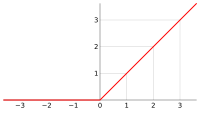Ramp function

Hello there! Today, I am going to explain to you what the ramp function is in a way that even a 5-year-old would understand.
Imagine that you are playing with toy cars on a track. You are trying to go as fast as you can until you reach a certain point where the track ends. When you start, you slowly accelerate until you are going as fast as you can, and then when you hit the end of the track, you quickly slow down until you stop. That acceleration is like the ramp function.
The ramp function is a mathematical function that starts at zero and increases steadily until it reaches a certain point. This function is often used in engineering and physics to describe things like motion and acceleration.
Let me give you another example that might help you understand better. Imagine that you are filling up a bucket with water from a hose. At first, the water will trickle out slowly, but as time goes on, the water will come out faster and faster until the bucket is full. The amount of water coming out of the hose is like the ramp function, increasing over time.
In mathematical terms, the ramp function is a piecewise function that is defined as 0 when the input is less than 0, and a linear function when the input is greater than 0. This linear function starts at 0 and increases at a constant rate until it reaches a certain value, which is usually denoted as "a."
So, there you have it! The ramp function is just a fancy way of describing something that starts at zero and increases steadily until it reaches a certain point. I hope this explanation helped you understand what the ramp function is all about!
Imagine that you are playing with toy cars on a track. You are trying to go as fast as you can until you reach a certain point where the track ends. When you start, you slowly accelerate until you are going as fast as you can, and then when you hit the end of the track, you quickly slow down until you stop. That acceleration is like the ramp function.
The ramp function is a mathematical function that starts at zero and increases steadily until it reaches a certain point. This function is often used in engineering and physics to describe things like motion and acceleration.
Let me give you another example that might help you understand better. Imagine that you are filling up a bucket with water from a hose. At first, the water will trickle out slowly, but as time goes on, the water will come out faster and faster until the bucket is full. The amount of water coming out of the hose is like the ramp function, increasing over time.
In mathematical terms, the ramp function is a piecewise function that is defined as 0 when the input is less than 0, and a linear function when the input is greater than 0. This linear function starts at 0 and increases at a constant rate until it reaches a certain value, which is usually denoted as "a."
So, there you have it! The ramp function is just a fancy way of describing something that starts at zero and increases steadily until it reaches a certain point. I hope this explanation helped you understand what the ramp function is all about!
Related topics others have asked about:
